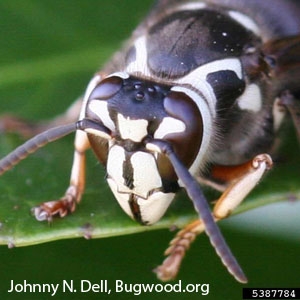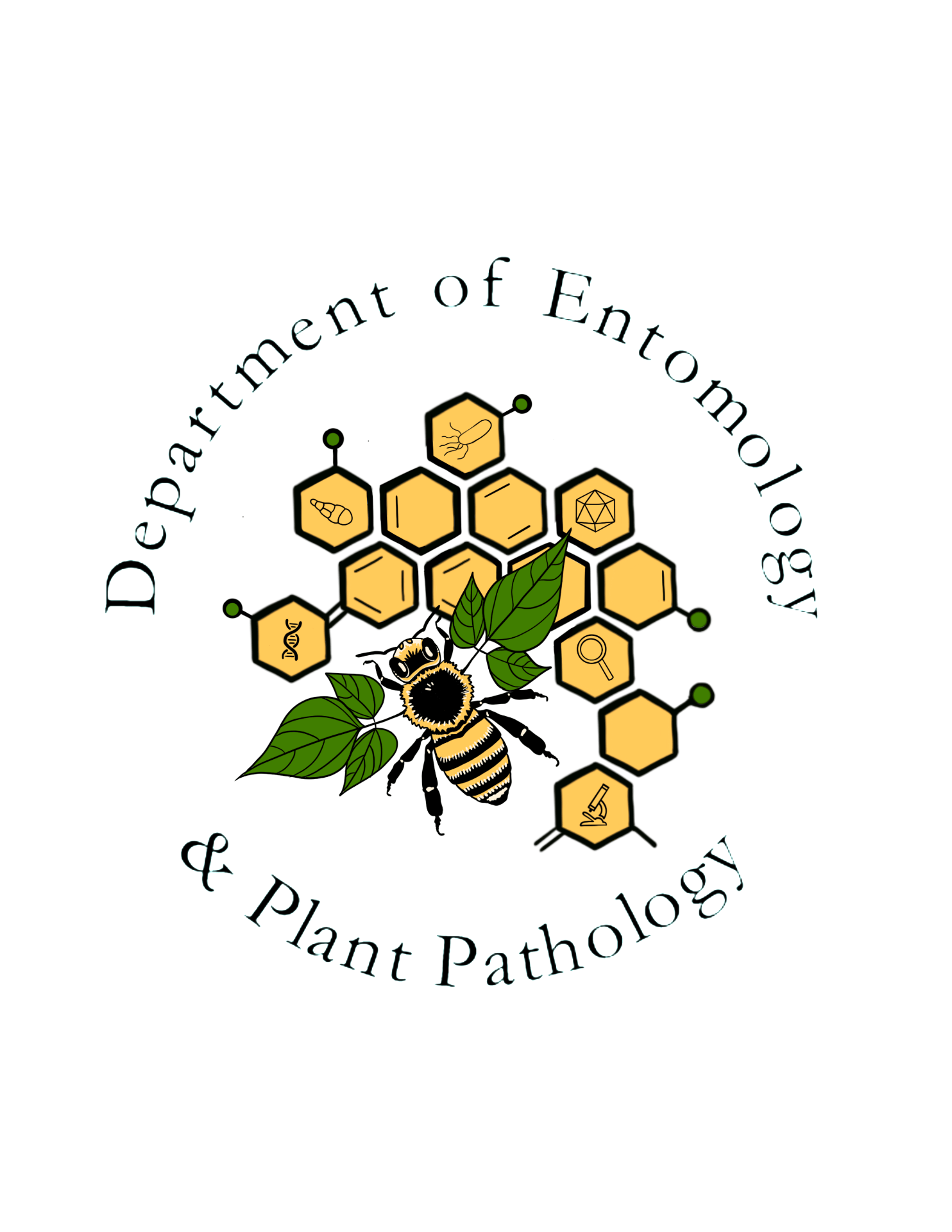Baldfaced hornet
Order: Hymenoptera
Family: Vespidae
Genus and species: Dolichovespula maculata (Linnaeus)


Dolichovespula maculata is called the baldfaced hornet because of its largely white face. The rest of the body is mostly black with some white markings, and the wings are smoky. Individuals reach up to about ¾ inch long. This species is widespread in North America but most common in the southeastern United States. The football-shaped paper nests are always aerial and usually suspended from tree limbs or beneath eaves and roofs. Inside the paper nest envelope are combs of paper cells used for rearing the larvae, one per cell. Females defend the nests aggressively with repeated stings, which are very painful and can also induce severe allergic responses in humans. In the spring, a queen born and fertilized at the end of the previous season begins a new nest, about the size of a tennis ball, and lays a few eggs that will develop into the first workers of the season. The workers then take over the task of enlarging the nest by expanding the outer envelop and adding cells to the inner, horizontal combs, using chewed plant fibers. They feed on nectar, sap, and fruit, and they chew insects and other arthropods, which they feed to developing larvae. At the end of the season, the queen produces eggs that develop into drones and new queens. These mate, and the new, fertilized queens overwinter underground or in other secluded spots. The drones and workers die as winter approaches. The old nests are abandoned and will not be reused. They are often damaged by birds preying on insects and spiders that seek shelter in them.
